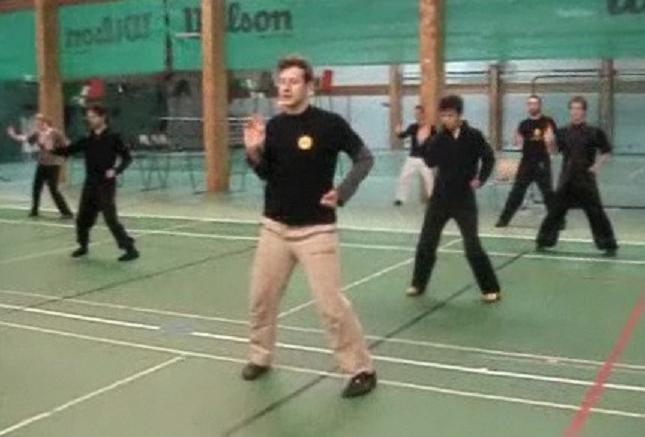FORCE METHOD AND FLOW METHOD

Developing internal force
Question
You have mentioned the four stages of practicing a kungfu set, which are the routine of the set, picture-perfect forms of all the patterns in the set, applying internal force in the patterns, and making the patterns flow smoothly. Did the Shaolin monks at the Shaolin Monastery use these four stages of practicing any kungfu set?
— John, Ireland
Answer
No, the Shaolin monks in the past did not use this method. When I learned from my sifu, Sifu Ho Fatt Nam, who inherited the method from the Shaolin monks, he also did not use this method. This method was evolved from my many years of teaching.
The method did not come all at once; it evolved gradually. Firstly, we have to learn the routine of the set. This is what most kungfu practitioners do. Unfortunately most of them only do this. They start learning kungfu sets, and continue learning kungfu sets throughout their kungfu career.
In our school I paid much attention to picture-perfect form, which Sifu Ho Fatt Nam and Uncle Righteousness emphasized. You may notice that when I teach chi kung, I do not pay so much attention to form. The main idea is to get the students to have an energy flow. But in kungfu, form is important. If the kungfu form is not picture-perfect, it will not have the advantages of combat.
I noticed that in my courses, kungfu students had little force. Some of them merely performed the form. So I taught them how to employ force in their patterns. Later I found that students might have force, but their kungfu patterns did not flow smoothly. So I introduced flow.
Over many years we evolved a system whereby students could perform a kungfu set in its correct routine with picture-perfect form, good force and smooth flow. I discovered that when students focused on the flow of their patterns, they often neglected their force and form. So I introduced the concept of "progressing without retrogressing". Students could perform patterns in a set in a flowing manner without neglecting their force and form, and following with the routine of the set.
We call this progression of learning the routine, picture-perfect form, force and flow of a kungfu set the force method. It was the initial method I used when teaching a kungfu set, and was specially useful in Shaolin Kungfu. When I taught Taijiquan, the emphasis was on flow. So gradually we developed the flow method, which is learning the routine of the set, making the form picture-perfect, focusing on the flow of the patterns, and when the flow is very smooth we attain force.
So we have two different approaches in learning a kungfu set, the force method and the flow method. These two terms -- the force method and the flow method -- were coined by me for the convenience of our students. Basically in the force method the progression is routine, form, force and flow. In the flow method the progression is routine, form, flow and force.
I tried out the flow method in the Iron Wire set in Ireland and Spain. The orthodox way of Iron Wire training is the force method. But surprisingly, we found the flow method very effective. In Barcelona in Spain, all the course participants in an Iron Wire course found that they developed more internal force using the flow method than using the force method.
Like many things we learn in our kungfu classes, the force method and the flow method are not only very useful in kungfu. They can be profitably transferred to our daily life. The force method, for example, is effective when a manager gives instructions to his staff, and the flow method is effective when performing any daily tasks.
LINKS
